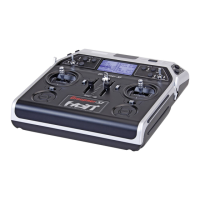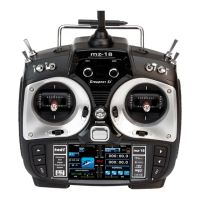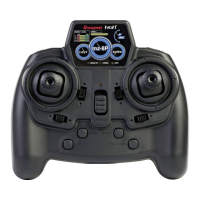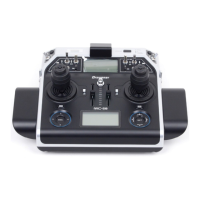309
Programming examples - Helicopter models
the
symbol with a brief tap on the center SET key
of the right touch pad:
!"#$%&’()
Owners name
@ACDEFGHIJKLMNOPQRSTUVWXYZ[¥]^_
?+,–./0123456789:;¾
¢ÇüéâäàåçêëèïîìÄÅÉæÆôöòûùÖÜ
`abcdefghijklmnopqrstuvwxyz{|}~
H-J Sandb
The pre-set for "Stick mode" can be selected
according to the criteria described on page 258.
The same applies to the pre-sets for "Modulation"
and "DSC Output".
The pre-set for "Pitch min" is a matter of personal
control habits.
The pre-sets established here for "Stick mode",
"Modulation", "DSC Output" and "Pitch forward/
back" will be initially adopted when a new model
memory is created but they can also be freely
changed within a given model memory location to any
other available option.
The settings in the "Top/Bottom LCD Contrast" lines
determine the legibility of the given displays under
poor light conditions and the setting in the "Display
light" line determines how long display lighting
remains illuminated after the transmitter is switched
on or after the last key actuation.
The selection of "yes/no" in the "Power-on/off beep"
line determines whether the "recognition melody" is
to sound when the transmitter is switched off or on
again.
The "Battery type" line specifi es whether the
transmitter is supplied with current from a "NiMH or a
“Lith." battery, and the "Battery warning" line below it
specifi es the voltage at which the transmitter's low-
voltage warning should trigger. Do not enter a value
that is too low here, so you have enough time to land
your helicopter.
The setting made in the "Stick warning" line
determines how long the transmitter will wait after the
last actuation of an operating element before issuing
visual and acoustic warning signals to indicate it
is still switched on. Following the warning, you still
have about one minute to actuate the transmitter so
the warning will abate. Otherwise the transmitter will
switch itself off when this minute expires.
The value set in the "Touch Sense" line is a matter
of adapting the transmitter to personal preferences.
And, in the event the transmitter is to be operated in
France, the setting in the "Region" line is important:
The legal regulations in France require that the
"FRANCE" option is selected instead of the default
setting "EURO".
Later on, the ten "Own phase name" lines can be
used to create one's own phase names if none of the
pre-set phase names appear appropriate.
Once these settings have been taken care of,
commissioning continues with the menu …
"Model select" (page 69)
Use the selection keys to pick a free memory
location …
03
04
05
01
06
R16
¿¿¿
free
¿¿¿
¿¿¿
free
¿¿¿
¿¿¿
free
¿¿¿
¿¿¿
free
¿¿¿
00:12h
¿¿¿
free
¿¿¿
02
… and call it up with a brief tap on the center SET
key of the right touch pad. In the display which then
appears, use the f key of the left or right touch pad …
Select model type (free model memory)
… to select the "helicopter" model type. The display
immediately switches to the base screen if the
selection is confi rmed by a brief tap on the center
SET key of the right touch pad.
Notes:
If the "Select model type" option has been •
opened, the process cannot be canceled. Even
if you switch off the transmitter, this selection
must be made! In any case, you can undo this
by subsequently deleting the respective model
memory.
If the "Throttle too high" warning appears, it can •
be erased by turning the right-side proportional
rotary control to its forward limit.
If battery voltage is too low, the model switchover •
cannot be made due to reasons of safety. An
appropriate message will appear in the screen:
not possible now
voltage too low
Once this fi rst hurdle is cleared, the connection of the
receiver built into the model at this model memory
must be made in the menu …
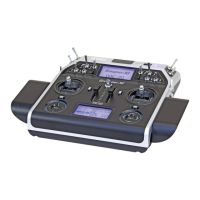
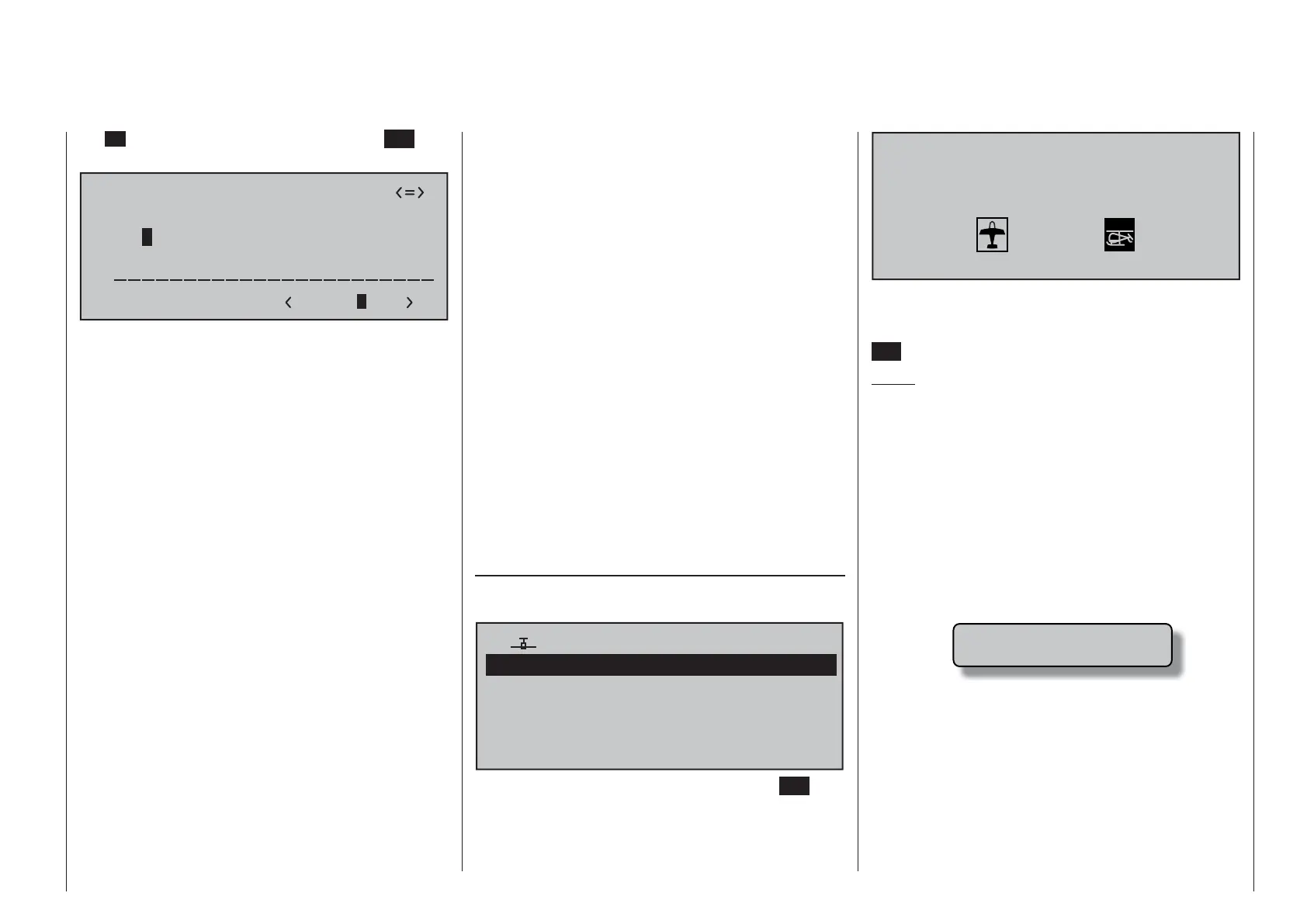